|
|
|
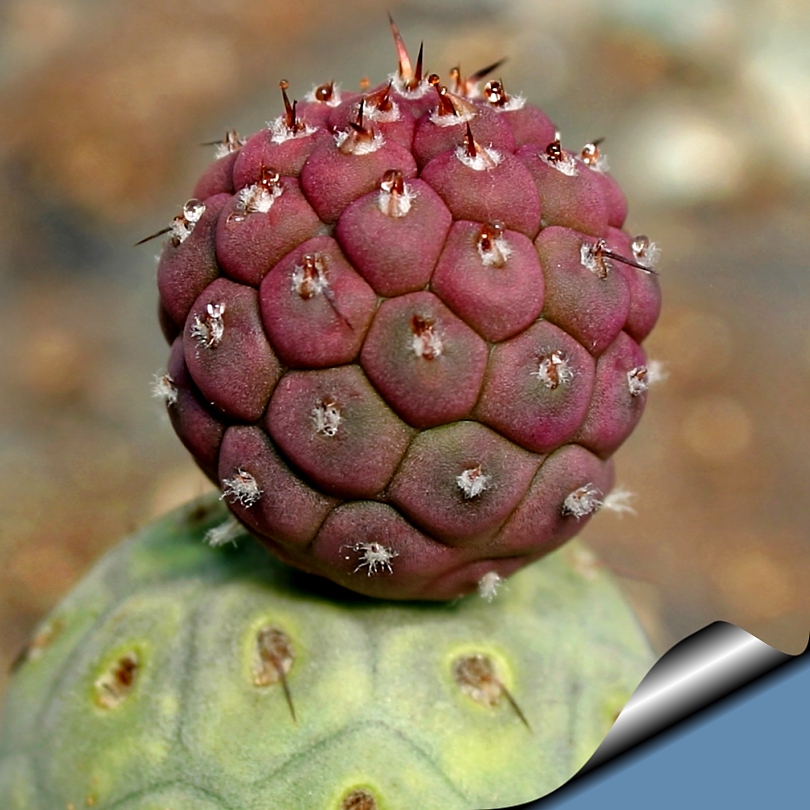
Nectar drops on a new
cladode
|
|
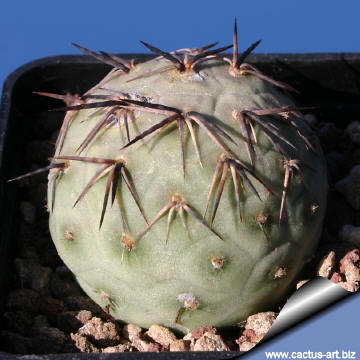
T. geometricus (Standard spiny form) |
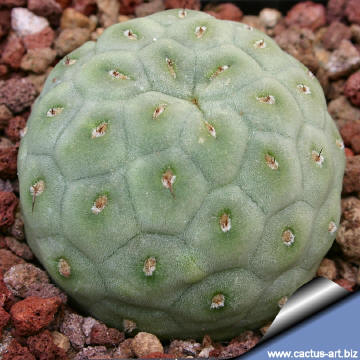
T. geometricus Villazón (Bolivia - Argentina border) |
|
. |
|
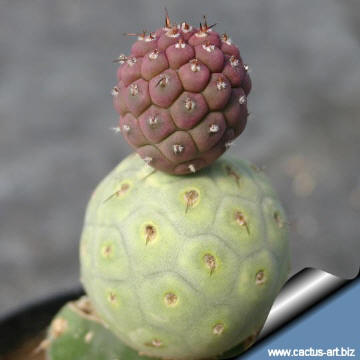
Young cladodes |
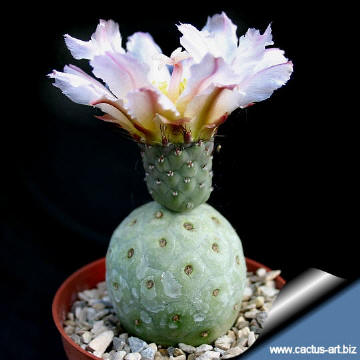
Flower |
|
. |
|
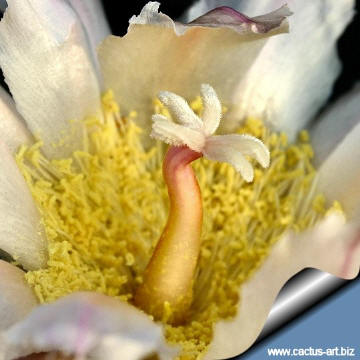 |
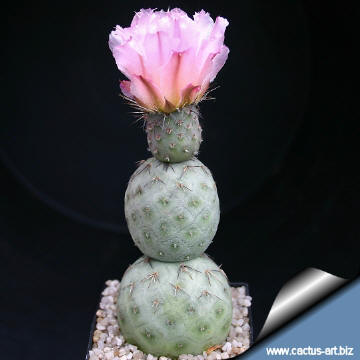 |
|
. |
|
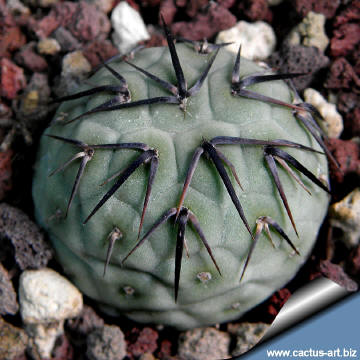 |
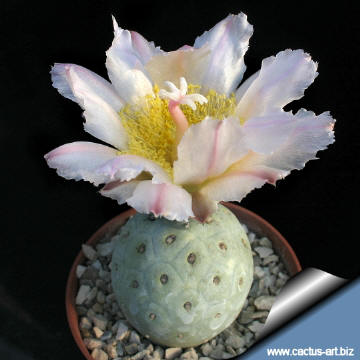 |
|
. |
|
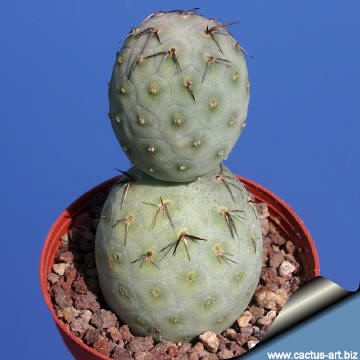 |
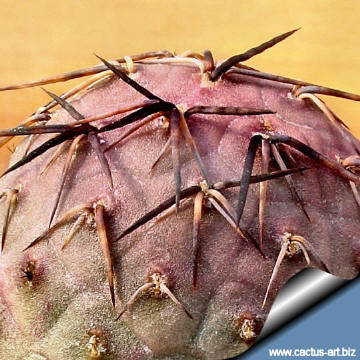 |
|


Advertising
|
|
|
|
|
Family:
Cactaceae
(Cactus Family)
Scientific Name:
Tephrocactus
geometricus
(A.
Castellanos) Back.
Published
in:Kaktus-ABC 111, 1935
Basionym:
Opuntia geometrica A.Cast. 1934
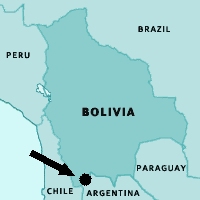 Distribution:
Argentina (Catamarca) and Bolivia border Distribution:
Argentina (Catamarca) and Bolivia border
Synonyms:
● Opuntia geometrica A.Cast. 1934
● Tephrocactus alexanderi v. geometricus
Etymology: The
genus name "Tephrocactus"
derives from the Greek adjective “tephros (τεφρος)”
meaning “ash coloured” plus the connective vowel
“o” used in botanical Latin for Greek words , and the
word “cactus” (an old genus name) (The genus name implies:
“ash coloured cactus”).
The
species name "geometricus"
derives
from
the
Latin adjective
“geometricus” meaning "geometric”
(The specific name implies:
“geometrical”)
|
|
Morphology (Identifying
Characteristics):
Habit:
Small
globular
segmented cactus that
cluster into small
clumps.
Stem:
“Geometric”
segments 4-5cm in diameter, clear
glaucous/blue that reddens to purple in full sun exposure. New
growing
cladodes are dark purple.
Leaves:
Very reduced,
ephemeral.
Areoles : A
caducuous white
felt is present in young areoles.
Glochids: Not present, or very reduced.
Spines:
Spineless, or with some solitary thin spines sporadically present
in the upper areoles, 2-5mm long,
appressed and turned downward.
Flower:
Light Pink-white with a darker
midstrip. Flowers last only one day.
Notes:
Slow growers, they produce only one, or a very few, new
cladodes per year. Easy to flower.
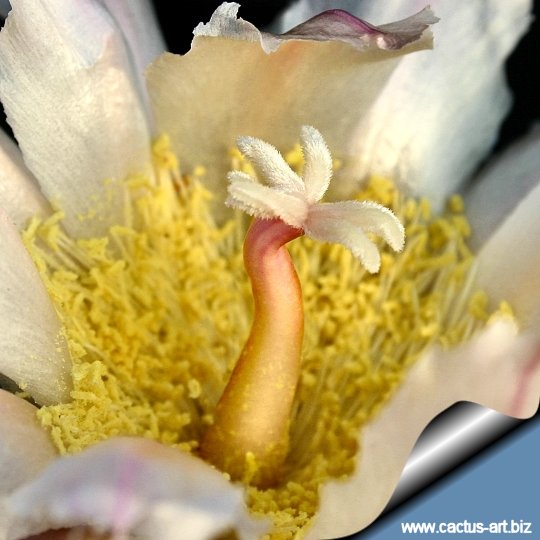
|
|
|
|
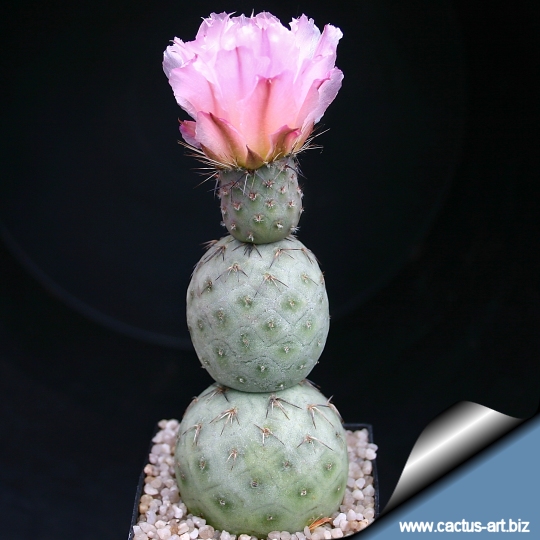
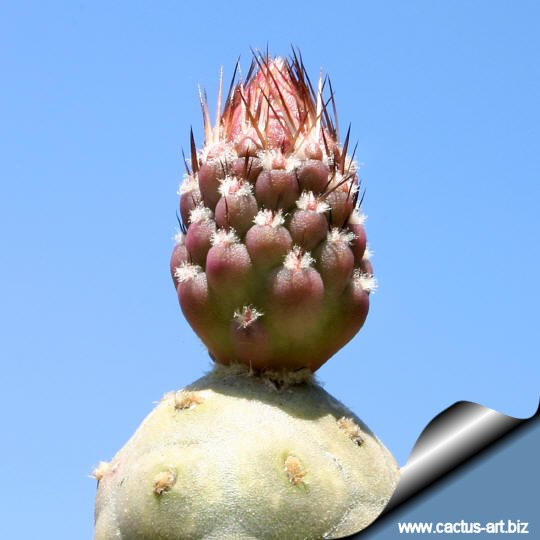
Cultivation:
It is
susceptible to
overwatering, but need enough water during the
growing season.
This
mountain cactus -
because of the
elongated fat
taproot -
necessitate deep
pots
and a well
drained
mineral potting mix. It prefers a full
sun exposure, but should be protected from excessive heat and
sun in summer.
Frost Tolerance: They tolerate light frost
-5
(-10) °C.
Need to be kept in a cool place during
winter rest this is important for the flowers as well as for
their health. Without this cool winter period they normally wont get
many
buds.
Keep dry in winter to avoid rot.
Need a sufficient
amount of air.
Propagation:
Seeds are extremely difficult to
germinate.
Best reproduced from rooted
cuttings. Grafting is often used to speed growth rate and to
create a back-up for plants in collection.
|
|